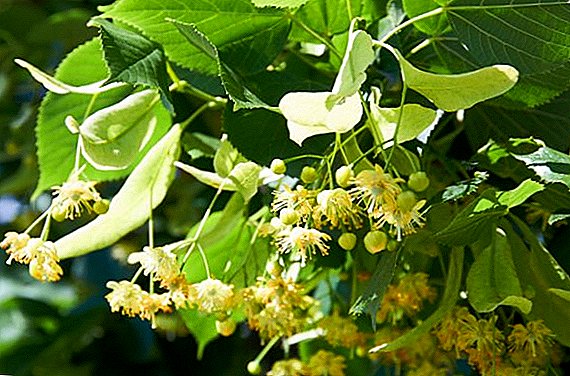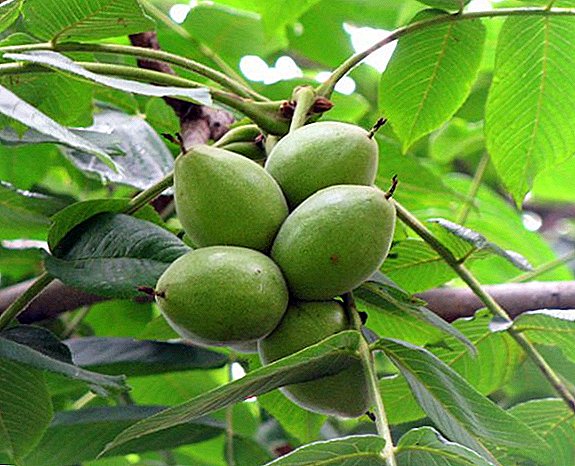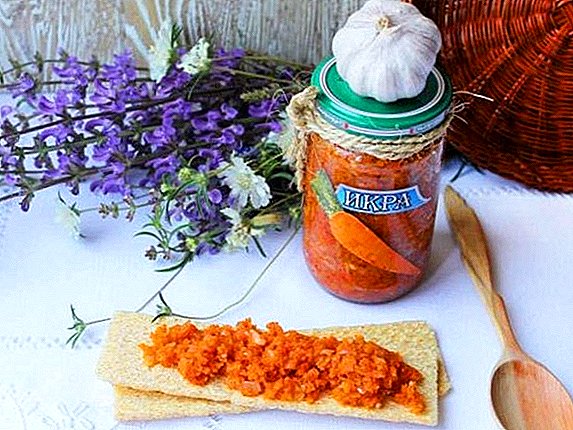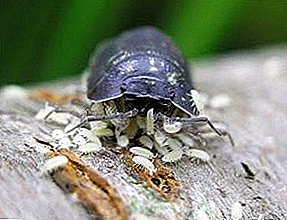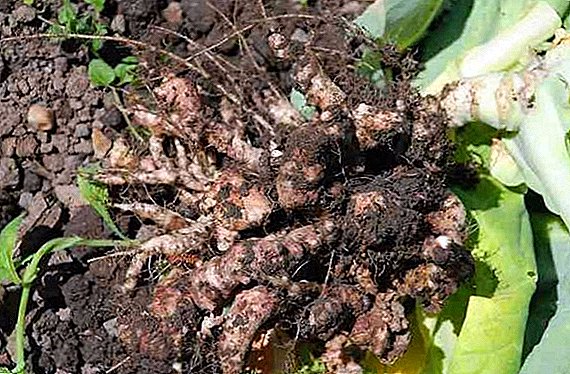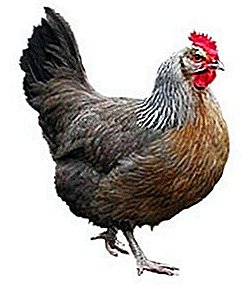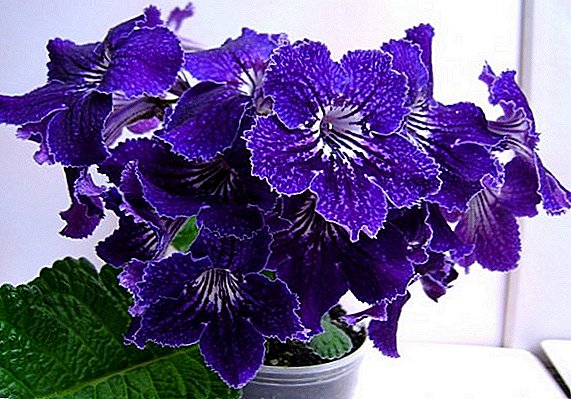 The owners of the exotic streptocarpus flower sometimes notice that the flower seems to have stopped developing, has become weak, the leaves have lost density, elasticity, and it seems that the plant has decreased in volume. Or the long-awaited flowering does not come, and the plant does not respond to either watering, or changing places and the amount of light. All this suggests that the flower is most likely affected by a disease. The good news is that streptocarpus diseases are relatively easy to diagnose and can be completely cured with timely intervention.
The owners of the exotic streptocarpus flower sometimes notice that the flower seems to have stopped developing, has become weak, the leaves have lost density, elasticity, and it seems that the plant has decreased in volume. Or the long-awaited flowering does not come, and the plant does not respond to either watering, or changing places and the amount of light. All this suggests that the flower is most likely affected by a disease. The good news is that streptocarpus diseases are relatively easy to diagnose and can be completely cured with timely intervention.
The main diseases of the flower and their treatment
Diseases affecting streptokarpus, usually triggered by improper care of the flower. 
Did you know? In nature, streptokarpus is an ascetic plant and easily survives in a poor mountainous and organic substance, but when it is kept at home it needs careful care and dies if it does not receive it.Maintaining the required level of soil moisture and preventing bush thickening are the most important conditions for its health. As a rule, experienced florists streptokarpus sick very rarely, but beginners may have difficulty determining the frequency of watering or fear before lightening the bush. After reading about the importance of moisture for streptocarpus, caring owners often flood the plant, and in an effort to do no harm, they refuse to cut off the excess leaves when it comes time to lighten or divide the bush. With such a content, streptokarpus does not bloom at best and will soon acquire a “disheveled” and untidy appearance, and at worst it will begin to ache and die.
All plant diseases, except those caused by parasites, are fungal in nature. This is caused by increased soil moisture and poor drainage of the pot. In such conditions, gray rot, rot of roots, and high humidity in a duet with high bush thickening are a gift for powdery mildew. 
Mealy dew
Mealy dew is a fungal disease, its causative agent is an ectoparasitic fungus from the order of the Erysifera. Spores of the fungus are often harmlessly present in various soils for houseplants, not manifesting themselves and causing no harm, and belong to conditionally pathogenic microorganisms. The spores of the fungus begin to germinate in the presence of favorable conditions: low temperature of about 15%, high humidity of 60-80%, poor air circulation. The appearance of powdery mildew resembles white dust or flour. The raid may appear on sheets or stalk. In the initial stages of the disease, the fungus is localized between closely located or intertwined parts of the plant, in places of the most thickened and difficult access of air.
Interesting information about the fight against diseases and pests: violets, dragon, begonias, cannes, ficus, cyclamen, carnations, orchids, asparaguses, asters, spathiphyllums, peonies.It is necessary to deal with this problem in a complex way:
- Remove affected parts. Sheets covered by the fungus must be removed, as the ulcers formed due to the effects of the parasites will not heal and will still lead to wilt.
- Replace topsoil in pot. Before starting treatment with chemicals, you should try to mechanically remove as much of the infected area as possible. The fungus is very stable, so do not overestimate the value of phytoncids.
- Treat the plant and soil with antifungal agents. The last step is the treatment of soil and plants with special chemicals. Against the powdery mildew most commonly used tools such as "Fitosporin" or "Baktofit", also suitable "Topaz" and "Skor".

Gray rot
Gray rot - a fungal disease that affects the leaves, stems and root system. The causative agent is Botrytis mushroom. It spreads through the air, soil and infected plants. Manifested by brown spots on stems and leaves. With increased humidity, spots are covered with gray fluffy mycelium, which gave the name of the disease. The vulnerability of streptocarpus to the fungus increases with frequent use of nitrogenous fertilizers. This is due to the fact that a high concentration of nitrogen in plant tissues violates the density of the cell wall and increases its susceptibility to harmful bacteria. Treatment of streptokarpus for fungal diseases, including gray rot, occurs according to the scheme:
- Removal of affected plant parts.
- Restoration of disturbed agrotechnical conditions (soil, drainage, temperature, etc.).
- Processing plants and soil fungicides ("Trichodermin", "Fitosporin", etc.).
Important! Copper-containing preparations are very effective in the fight against gray rot, but the high content of copper in the soil is harmful for streptocarpus, therefore it is better to refuse such agents.
Rot of stalks, roots and stalks
Root rot can be triggered by fungal infections or excess moisture in the soil. A fungal infection, as a rule, will soon spread to the body of the plant, which will become clear through brown spots, darkening petioles and leaves that have lost turgor. The source of the disease is most often not a very high-quality or poorly balanced substrate, in which, under favorable conditions, the spores of fungi begin to germinate.  The first debt should eliminate all of the above adverse factors that may affect the plant (cold, stagnant air, humidity, etc.). After that, it is recommended to process the flower with Trichodermin or Pseudobacterin biologics. Processing is carried out 1 or 2 times, depending on the need, with a ten-day interval. In parallel with the treatment of the ground part of the plant, the substrate can be watered with a solution of "Fundazol" (0.2%) or "Topsina-M". "Topsin-M" is sold in the form of a solution and powder. The use of the solution is more convenient, but the minimum available volume of such a drug is 1 liter, and the product is quite expensive. Packages of 10, 25 and 500 grams are available in powder form.
The first debt should eliminate all of the above adverse factors that may affect the plant (cold, stagnant air, humidity, etc.). After that, it is recommended to process the flower with Trichodermin or Pseudobacterin biologics. Processing is carried out 1 or 2 times, depending on the need, with a ten-day interval. In parallel with the treatment of the ground part of the plant, the substrate can be watered with a solution of "Fundazol" (0.2%) or "Topsina-M". "Topsin-M" is sold in the form of a solution and powder. The use of the solution is more convenient, but the minimum available volume of such a drug is 1 liter, and the product is quite expensive. Packages of 10, 25 and 500 grams are available in powder form.
Did you know? Substrate boiling or boiling is a good preventive method. Before planting seedlings in it, the substrate is placed in a metal dish with warm water and boiled for 1.5 to 2 hours. When boiling die mold spores and fungi.
Phytophthora
The phytophtora prefers to settle on agglomerated soils and parasitizes mainly on the plants of the nightshade family (petunias, tobacco). Gesnerievye and streptokarpus, in particular, - not quite suitable for her target, and infection occurs in rare cases. If the disease is still transmitted, use "Fitoftorin" solution for treatment. Another good remedy is the German drug Previkur, a broad-spectrum fungicide. In addition to antifungal, the drug has a stimulating effect, increases plant resistance to various diseases and contributes to the rooting of cuttings. 
How to deal with streptocarpus pests
Pest infestation is always exogenous, therefore streptokarpus suffer from them much less frequently than from fungal diseases. The source of infection is usually a poor-quality soil or an infected plant. The most unpleasant pests that can claim to be close to your streptocarpus are thrips and scale insects.
In addition, useful information will be the rules on the use of the following insecticides and fungicides: "Inta-vir", "Bi-58", "Fitoverm", "Aktellik", "Alirin B", "Abiga-Peak", "Strobe."
Getting rid of thrips
Thrips are small arthropod insects 1-2 mm long. Larvae and adults feed on plant sap.
At first, yellow or brown spots appear on the foliage and stem, the sheets begin to dry out and curl from the edge to the middle, and the dried out sheets are perforated with a sharp parasite chewing apparatus. Even on the outer and inner part of the leaf can be seen insect excrement.  The elimination of thrips is carried out in stages:
The elimination of thrips is carried out in stages:
- Thrips love to settle in flowers, so if you notice the symptoms of parasitic invasion during the flowering period, the first thing you have to do is get rid of all the flowers and buds in a barbaric way.
- Insecticide treatment. Treat the plant with insecticide should be given the life cycle of the parasite. A single treatment can destroy all adults and larvae, but the eggs and nymphs, protected by a strong shell, will lie down until better times. Therefore, disinsection should be carried out in three sets with seven-day breaks. For processing use the drug "Fitoverm" in a concentration of 1 ampoule per glass of water. The solution is sprayed above-ground part of the plant and moisten the surface of the soil.
Important! Any prepared solution can not be stored, and it should be used immediately. Further, the tool loses its properties or even becomes toxic.
How to get rid of flail
Shchitovka - a parasite from the family of hemiptera. The body of the insect is covered with a two-part shield, which is sealed with a special wax secret.  Chaotically arranged round necrosis of brown color begins to appear on sheets affected by the shield. In place of necrosis, through holes form over time. The favorite place of the village is the back side of the sheet.
Chaotically arranged round necrosis of brown color begins to appear on sheets affected by the shield. In place of necrosis, through holes form over time. The favorite place of the village is the back side of the sheet.
Fighting shield includes:
- mechanical removal of parasites;
- insecticide treatment.
Today, the market is filled with a variety of products to combat diseases and pests of ornamental and cultivated plants, and good, most of them work well. But it is worth remembering that the best treatment is prevention, and following simple rules, you can forget about all sorts of diseases and pests. But in the case of the disease do not despair! After all, a well-established reason, plus timely intervention will give 100% success.


